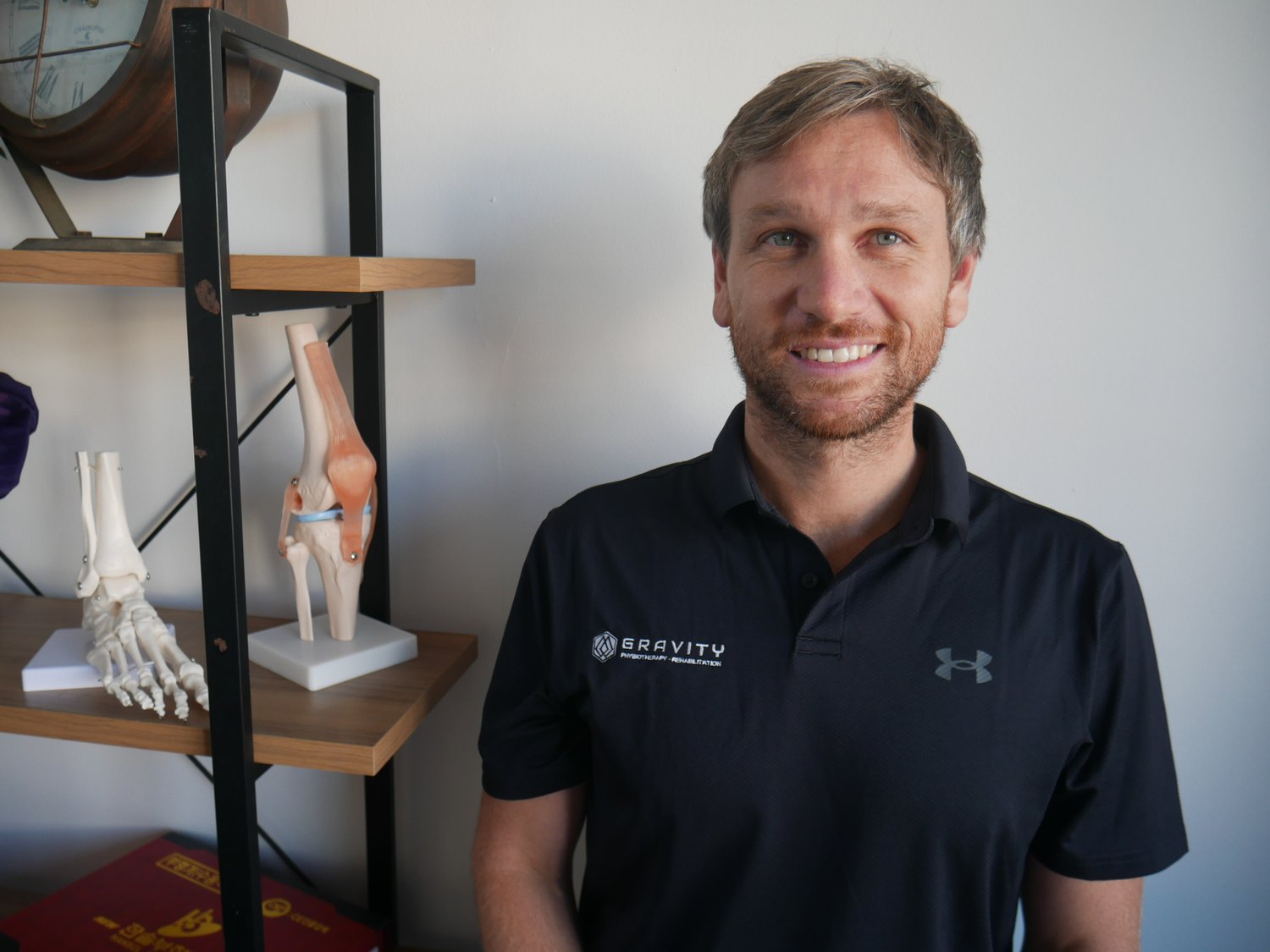A Pain in The Neck: How Physiotherapy Can Help with Acute Wry Neck
Stiff Neck in The Morning?
Acute wry neck, commonly known as torticollis, is a distressing condition that can cause sudden pain, stiffness, and limited movement in the neck. This ailment can stem from various factors, such as stress, poor sleep, prolonged desk work, neck muscle strain, or inflammation. Whether you wake up with a stiff neck or experience it after a sudden movement, the pain and discomfort can disrupt your daily activities and leave you searching for relief.
Understanding Acute Wry Neck
Imagine waking up one morning, trying to turn your head to the side, and being met with a sharp, shooting pain that makes even the simplest tasks difficult. Acute wry neck can be triggered by several factors, and the most common tale is that of waking up with a stiff neck. However, it can also strike when you move your head suddenly in the wrong direction, leaving you in discomfort for days. The good news is that while this condition can be intensely painful, it is generally not serious in nature.
Symptoms of Wry Neck
Experiencing acute wry neck can be a distressing and uncomfortable ordeal. Understanding the symptoms associated with this condition can help you identify it early and seek timely physiotherapy intervention.
1. Neck Pain: The hallmark symptom of acute wry neck is neck pain, which can range from mild to severe. The pain is often localized and can be felt on one side of the neck, making it challenging to turn or tilt your head.
2. Stiffness: A feeling of stiffness in the neck is another common symptom. You might find it difficult to move your neck freely, and any attempt to do so can result in pain and discomfort.
3. Limited Range of Motion: Due to the stiffness and pain, your range of motion in the neck may become restricted. This limitation can impact your ability to perform routine activities, such as driving, reading, or even looking over your shoulder.
4. Head Tilt: In some cases, acute wry neck can cause your head to tilt to one side. This tilt is often in the opposite direction of the pain, as the body instinctively tries to find a position of relief.
5. Muscle Spasms: You may experience muscle spasms in the neck, contributing to the pain and further restricting your neck's movement.
6. Shoulder Pain: The discomfort from acute wry neck can sometimes radiate to the shoulders, exacerbating the overall discomfort.
Remember, these symptoms may vary in intensity from person to person. If you notice any of these signs, it's crucial to seek professional advice from a qualified physiotherapist.
Possible Causes of Acute Wry Neck Pain
Understanding the potential causes of acute wry neck can help you prevent its occurrence in the future. While the exact cause can vary from person to person, here are some common factors that can contribute to this painful condition:
1. Muscle Strain: Overexertion of the neck muscles due to sudden or excessive movement, such as turning your head rapidly, can lead to muscle strain and subsequent wry neck.
2. Poor Posture: Maintaining poor posture for extended periods, especially during desk work or using electronic devices, can strain the neck muscles and contribute to acute wry neck.
3. Stress and Tension: High levels of stress and tension can cause muscle tightness and stiffness in the neck, increasing the risk of wry neck.
4. Sleeping Position: Sleeping in an awkward or unsupported position can strain the neck muscles and result in acute wry neck upon waking.
5. Inflammation: Inflammation of the neck muscles or joints, often triggered by injury or underlying medical conditions, can lead to acute wry neck.
6. Degenerative Changes: Age-related wear and tear on the cervical spine can lead to degenerative changes in the neck, making it more susceptible to acute wry neck.
7. Underlying Medical Conditions: Certain medical conditions, such as cervical spondylosis or arthritis, can increase the likelihood of experiencing acute wry neck.
By being mindful of these potential causes and adopting preventive measures, such as maintaining good posture, managing stress, and practicing neck exercises, you can reduce the risk of developing acute wry neck and enjoy a healthier, pain-free neck.
The Role of Physiotherapy in Acute Wry Neck
As an experienced physiotherapist who has helped countless individuals overcome neck pain and stiffness, I have witnessed the transformative power of physiotherapy in addressing acute wry neck. Physiotherapy offers a holistic approach to pain relief, restoration of function, and quick recovery, all while providing personalized care and support.
Pain Relief through Physiotherapy
One of the primary objectives of physiotherapy in treating acute wry neck is pain reduction. Employing a combination of techniques and modalities, your physiotherapist will target the affected muscles and tissues. Through hands-on soft tissue massage, heat therapy, and gentle exercises, they will alleviate muscle tension, improve blood flow, and reduce inflammation. These interventions can provide much-needed relief, making your journey to recovery smoother and more comfortable.
If you find yourself grappling with acute wry neck and its associated symptoms, seeking professional physiotherapy care is the first step toward relief and recovery. Our experienced physiotherapists at Gravity Physio Brookvale are dedicated to helping you overcome neck pain, restore function, and improve your overall well-being, enabling you to embrace an active and pain-free life. Don't let a stiff neck hold you back; take action today and embark on your journey to recovery with the support of physiotherapy. Read on for more ways that we can help.
Restoration of Function with Customized Exercise Programs
Regaining the normal range of motion in your neck is crucial for overcoming acute wry neck fully. Your physiotherapist will create a tailored exercise program, focusing on specific muscles and joints in your neck and shoulders. These exercises will help stretch and strengthen your muscles, enhance your posture, and restore your ability to move your head and neck without pain or discomfort. Additionally, your physiotherapist may recommend preventative exercises to address any identified postural or strength deficits, reducing the risk of future occurrences.
Quicker Recovery through Personalized Rehabilitation
A seasoned physiotherapist knows that each patient's journey to recovery is unique. By addressing the root cause of your pain and providing targeted treatment, physiotherapy can expedite your recovery and minimize the risk of further injury. During your treatment, your physiotherapist will work with you to develop a personalized rehabilitation plan that aligns with your goals, needs, and lifestyle. This individualized approach ensures that you regain your normal function in the quickest and safest manner possible.
Prevention Strategies for Acute Wry Neck
Preventing acute wry neck is essential to avoid the discomfort and disruption it can cause in your daily life. Incorporating simple yet effective preventive strategies can significantly reduce the risk of developing this painful condition. As an experienced physiotherapist, I have seen the power of prevention in helping my clients maintain a healthy and pain-free neck. Here are some key prevention tips to consider:
Here’s a few tips:
1. Maintain Good Posture: Practicing good posture is crucial for neck health. Whether you're sitting at your desk, working on your computer, or standing, ensure that your neck is aligned with your spine. Avoid slouching or craning your neck forward for extended periods. Ergonomic adjustments to your workspace, such as adjusting your chair and monitor height, can also help maintain proper neck alignment.
2. Stretch Regularly: Incorporate neck and shoulder stretches into your daily routine to keep the muscles flexible and reduce tension. Simple exercises like neck rotations, side bends, and shoulder rolls can work wonders in preventing neck stiffness.
3. Strengthen Neck Muscles: Strengthening the muscles that support your neck can provide added protection against acute wry neck. Include exercises that target the neck, upper back, and shoulders to improve muscle strength and stability.
Make it stand out
4. Avoid Self-Cracking Your Neck Too Often: Be mindful of the urge to chase that ‘crack’ in the neck too often, as to get that ‘crack’ we need to place our neck in often compromising positions. Doing this over and over can stretch the deep capsular tissue of our facet joints in our neck and lead to chronic stretching and inflammation of the area.
5. Use Supportive Pillows: Choose a supportive pillow that keeps your neck aligned with your spine while you sleep. The right pillow can help prevent neck strain and stiffness caused by poor sleeping posture.
6. Manage Stress: Chronic stress can lead to muscle tension, including in the neck area. Practice stress-reducing techniques such as deep breathing, meditation, or yoga to promote relaxation and alleviate neck strain.
7. Take Breaks during Desk Work: If your job involves prolonged desk work, take regular breaks to stretch and move around. Incorporate neck exercises into these breaks to relieve muscle tension and maintain flexibility.
8. Stay Active: Regular physical activity is essential for overall health, including neck health. Engaging in activities that promote neck mobility, such as swimming or yoga, can be beneficial.
9. Stay Hydrated: Drinking plenty of water helps keep your muscles and tissues hydrated, reducing the risk of muscle cramps and stiffness.
10. Seek Regular Physiotherapy Check-ups: Regular visits to a physiotherapist can help identify and address any potential issues with your neck before they become severe. A physiotherapist can provide personalized advice and exercises based on your individual needs and lifestyle.
By incorporating these preventive measures into your daily routine, you can significantly reduce the likelihood of experiencing acute wry neck and enjoy a more comfortable and pain-free neck for the long term.
Take Charge of Your Neck Health
Remember, your neck health is in your hands. By taking proactive steps to prevent acute wry neck and seeking timely physiotherapy intervention when needed, you can ensure a strong, flexible, and pain-free neck that supports you in all your activities. If you ever experience neck pain or discomfort, don't hesitate to reach out to our experienced physiotherapists at Gravity Physio Brookvale. We are here to provide evidence-based, personalized care to help you maintain optimal neck health and overall well-being. Take charge of your neck health today and embrace a life without the burden of neck pain!
Conclusion: Get Back on Track with Physiotherapy
Acute wry neck can be a painful and frustrating condition, but the good news is that physiotherapy can help you return to your normal self in the fastest and safest way possible. By addressing the underlying cause of your pain and providing targeted treatment, physiotherapy aims to get you back on track, resuming your daily activities pain-free.
If you are suffering from acute wry neck or any other neck pain, don't hesitate to reach out to our experienced physiotherapists at Gravity Physio on the Northern Beaches. Our evidence-based, hands-on treatments, coupled with personalized care and exercise prescription, can help you achieve optimal health and wellness.
Remember, there's no need to let a pain in the neck hold you back—physiotherapy can be your key to a pain-free and active life!












